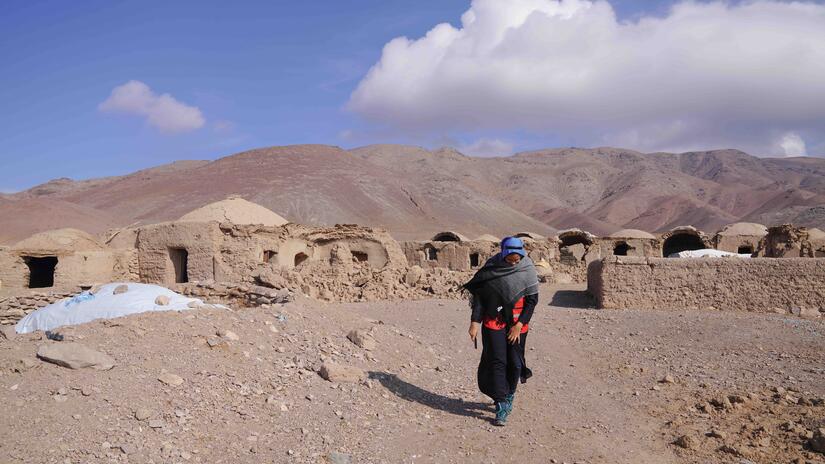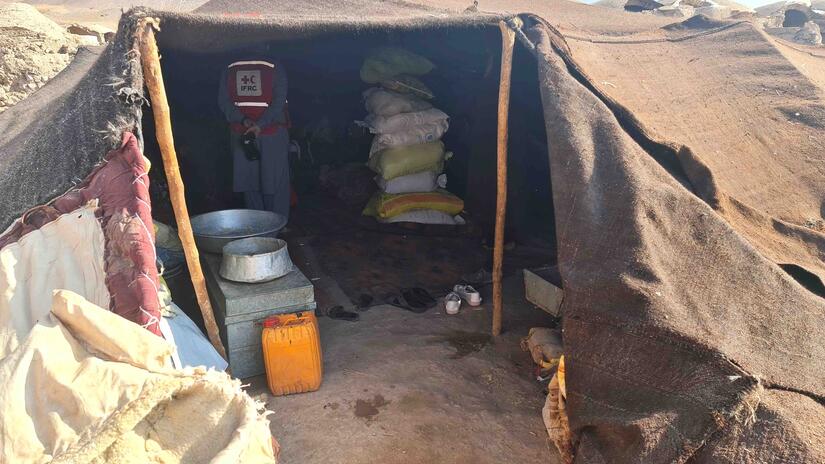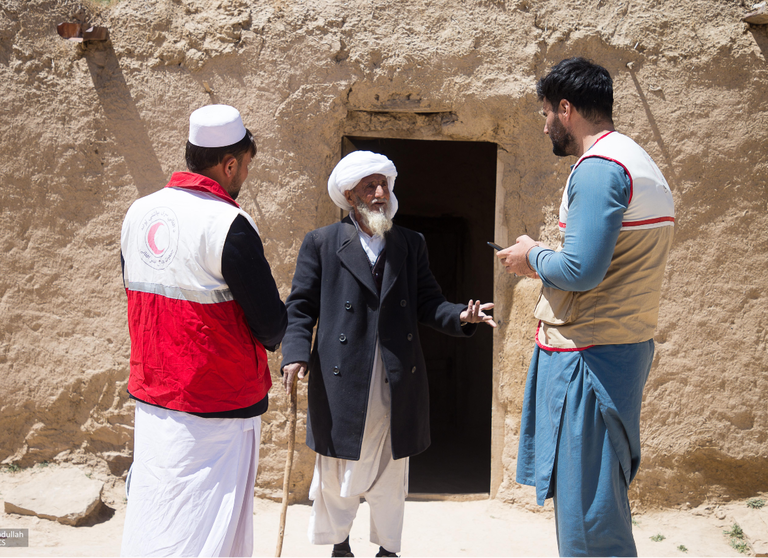By Mir Abdul Tawab Razavy and Rachel Punitha
The earthquakes that struck the western Afghan state of Herat in October 2023 destroyed homes and claimed lives over a wide swath of mountainous terrain — from the state’s main city, Herat, all the way to mountain villages miles away.
The epicentre was recorded near a mountain range just west of Herat state, resulting in widespread destruction in more than 380 villages.
Many of the lives lost were women and children. Surviving family members found themselves thrust into the harsh reality of loss and despair, with winter approaching and their homes in ruins.
Once the proud caretakers of small flocks of sheep, families now face the daunting challenge of rebuilding their lives and livelihoods. But their most immediate plea is for safe, warm shelter as temperatures continue to drop.
“We need help with rebuilding our homes,” villagers consistently tell Afghanistan Red Crescent and IFRC teams that visit the villages and offer a wide range of support.

Following the initial emergency response, Afghan Red Crescent and IFRC teams have gone many times to shattered villages to distribute cash, conduct counselling and help construct shelters, among other things.
Photo: Meer Abdullah Rasikh/IFRC
More support urgently needed
The Afghan Red Crescent, along with the IFRC, have been working together to help the people rebuild their homes and make sense of what has happened. Afghan Red Crescent has deployed over 200 staff and volunteers, reaching more than 112,000 people across 40 villages with emergency shelter, household items, food, health services, and WASH items.
The food assistance they’ve provided has reached over 7,300 households, whille cash assistance valued at more than $US 22,000 (AFN 1,568,000) has been provided to 410 families. Health services, including mental health and psychosocial support, have been extended to over 12,000 people, supported by the Danish Red Cross, Norwegian Red Cross, and IFRC.
At the early onset of the earthquakes, more than 15,000 emergency shelter items (tarpaulins or tents) were distributed, while Red Cross Red Crescent teams’ staff and volunteers work round the clock to work out proper permanent shelter solutions. Since then, shelter engineers have been deployed to the areas and are assessing their shelter needs for immediate procurement.
In collaboration with ARCS, the IFRC has mobilized additional financial support for Herat through its network and the larger Emergency Appeal for the Afghanistan Humanitarian Crisis. Meanwhile, IFRC-DREF has increased its contribution to the emergency appeal by an additional CHF 750,000, raising the total IFRC-DREF contribution to the Afghanistan crisis to CHF 2,500,000.
But more is still needed to meet the needs identified by the appeal and to ensure people in Herat state have what they need to get through nights of bitter cold.

In an effort to keep his children warm and protected from winter winds, Abdul Qayoum digs into the hard ground to make a makeshift shelter.
Photo: Meer Abdullah Rasikh/IFRC
Digging to stay warm
In one mountainside village, Abdul Qayoum, is grappling with the responsibility of four children, including two very young toddlers. As their tent offered little defense against the biting cold and relentless winds, especially during the night, his children have been shivering night after night.
With no other options, Abdul Qayoum began laboring tirelessly, digging into the unforgiving ground in a desperate attempt to create a more secure space, into which he could settle in with his children so that the winds howl past them. His eyes reflected a mixture of determination and despair while he explained his family’s plight.
In this village, IFRC teams also witnessed a group of mothers and grandmothers who were attempting to put up a tent with their bare hands in the cold. They were hoping that it would withstand the fierce, night winds.

The Herat earthquake and aftershocks reduced many homes to complete rubble.
Photo: Meer Abdullah Rasikh/IFRC
More resilient shelter
Afghan Red Crescent and IFRC shelter teams have been working urgently along with other humanitarian organisations to approve a shelter design that can be constructed locally and will be able to withstand further shocks.
“We will be including volunteers from villages and local masons from the cities in our training sessions on how to mount proper bracing for the walls of their new shelters,” says an IFRC Shelter specialist deployed to Herat.
“The homes that were destroyed in the earthquake were all made of mud or clay and were built by hand. Unfortunately, that is why they were reduced to rubble so fast.
“Now we want to make sure that they know how to include metal or even wood bracings in their walls and roofs so that their homes can withstand a greater degree of shock.”

Along with Afghan Red Crescent teams, an IFRC staff member visits the makeshift shelter of a family that lost their home to the quake.
Photo: Meer Abdullah Rasikh/IFRC
‘My only hope’
In the meantime, people are trying to maintain hope even as they grieve for what they have lost. 45-year-old Halima [not her real name], says she is able to enjoy some warmth for a short while, when she cooks in her tent as a means to keep warm. She admits this is not very safe, but she has no other option.
Halima had adopted a young boy from her community as she did not have any children of her own. This is one of the many ways that people look out for each other in the community, she says.
Sadly, her adopted son lost his life in the earthquake.
“He was my only hope,” she says, with an expression of deep anguish.





